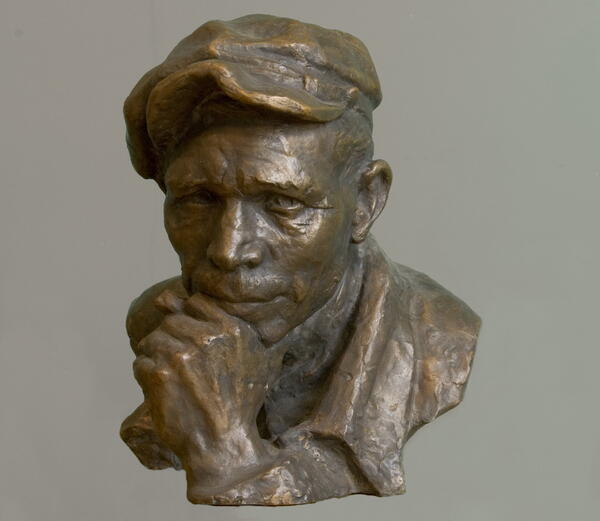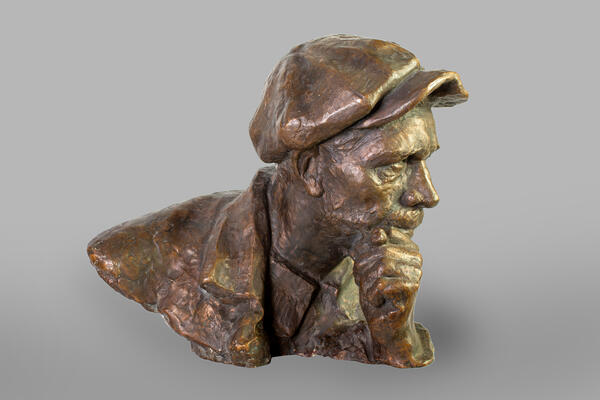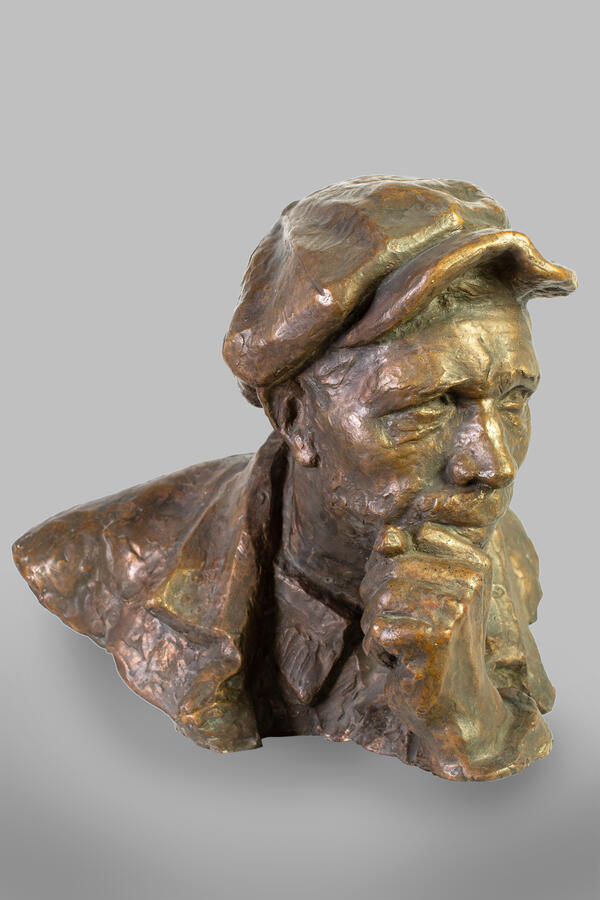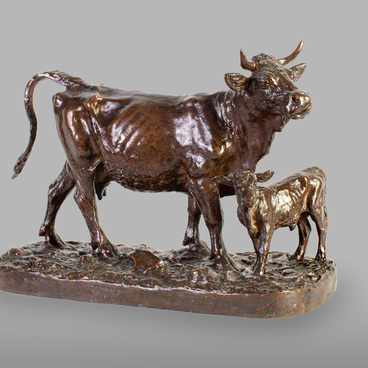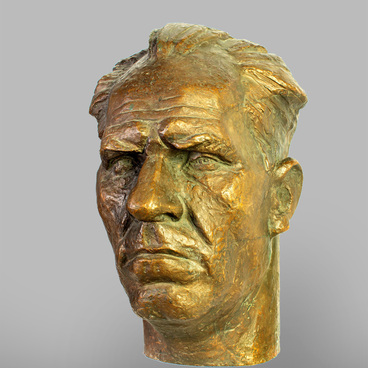The sculptural portrait “Uncle Pasha — a Collective Farm Animal Breeder” housed in the Tambov Art Gallery was made by the Honored Artist of Russia and sculptor Sergey Yefimovich Lebedev (1929–1993).
Sergey Lebedev is widely known for his numerous indoor and monumental works of sculpture. His career is closely connected with the Tambov region. Sergey Lebedev was born in Saratov in 1929. From his childhood, he drew and sculpted a lot, and tried to embody his favorite literary images in plasticine. After leaving school, Lebedev entered the painting department of the Saratov Art College. The next milestone in his professional development was the Repin Institute of Painting, Sculpture and Architecture. Vsevolod Lishev, the People’s Artist of the USSR, helped the future sculptor to master professional techniques and various materials. He instilled in Lebedev an understanding of plasticity and a scrupulous attitude to the model. After graduation, Lebedev lived and worked in Saratov for a few years. He came to Tambov in the early 1960s.
The sculpture “Uncle Pasha — a Collective Farm Animal Breeder” was the first work the sculptor made in Tambov. The first plaster version (which is also kept in the collections of the Tambov Art Gallery) was created by Lebedev at the Komintern collective farm in the Michurinsk district. Translated into the wood, the portrait was exhibited in 1963 at the international exhibition of young artists in Paris. The characteristic features of the sculptor’s plastic language could already be seen in this early work. A specific image of a person with his particular features became Lebedev’s portrait of a contemporary. The bold and expressive nature of modeling in this work reveals the calmness and inner concentration of the worker; the forms are not excessively refined, and all the details are relatively coarse and generalized.
Uncle Pasha — a man of about forty, with an intelligent, slightly tired look of observant eyes — is depicted in moments of deep thought. This businesslike calm concentration is expressed not only in the look but also in the very pose of the character, who rests his chin with his left hand clenched into a fist. The composition of the bust chosen by the sculptor features particular firm stability, which reveals more clearly the nature of a man of great inner strength, who can tackle a complex and important task.
Sergey Lebedev is widely known for his numerous indoor and monumental works of sculpture. His career is closely connected with the Tambov region. Sergey Lebedev was born in Saratov in 1929. From his childhood, he drew and sculpted a lot, and tried to embody his favorite literary images in plasticine. After leaving school, Lebedev entered the painting department of the Saratov Art College. The next milestone in his professional development was the Repin Institute of Painting, Sculpture and Architecture. Vsevolod Lishev, the People’s Artist of the USSR, helped the future sculptor to master professional techniques and various materials. He instilled in Lebedev an understanding of plasticity and a scrupulous attitude to the model. After graduation, Lebedev lived and worked in Saratov for a few years. He came to Tambov in the early 1960s.
The sculpture “Uncle Pasha — a Collective Farm Animal Breeder” was the first work the sculptor made in Tambov. The first plaster version (which is also kept in the collections of the Tambov Art Gallery) was created by Lebedev at the Komintern collective farm in the Michurinsk district. Translated into the wood, the portrait was exhibited in 1963 at the international exhibition of young artists in Paris. The characteristic features of the sculptor’s plastic language could already be seen in this early work. A specific image of a person with his particular features became Lebedev’s portrait of a contemporary. The bold and expressive nature of modeling in this work reveals the calmness and inner concentration of the worker; the forms are not excessively refined, and all the details are relatively coarse and generalized.
Uncle Pasha — a man of about forty, with an intelligent, slightly tired look of observant eyes — is depicted in moments of deep thought. This businesslike calm concentration is expressed not only in the look but also in the very pose of the character, who rests his chin with his left hand clenched into a fist. The composition of the bust chosen by the sculptor features particular firm stability, which reveals more clearly the nature of a man of great inner strength, who can tackle a complex and important task.

